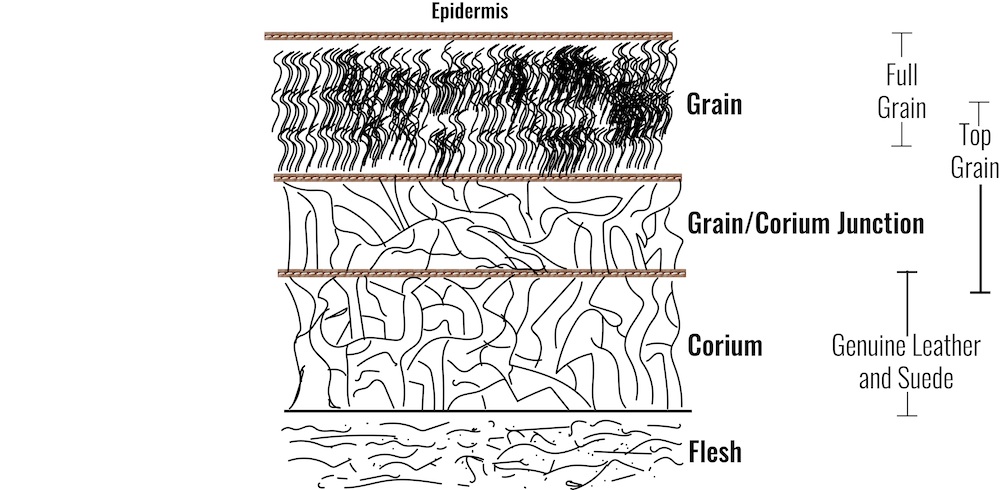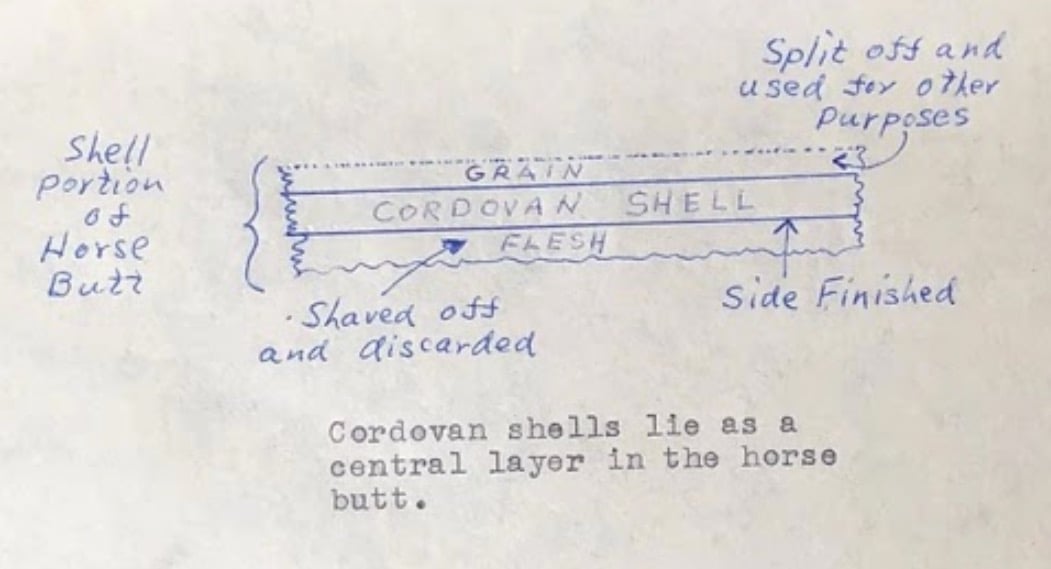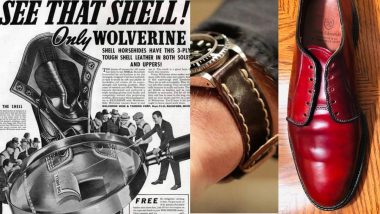Is Shell Cordovan Leather?
Shell cordovan: one of the most long-lasting (and expensive) materials used to make shoes and boots. Known for its uncommon durability, water resistance, high shine, and incredible resistance to creasing, it’s so different from all other forms of leather that it’s understandable you wouldn’t even put cordovan in that category.
However, the fact is that shell cordovan comes from a horse. And it’s tanned over a long period to produce material for shoes and belts.
Despite this, many shell cordovan collectors and enthusiasts still claim that shell cordovan is not technically “leather.” So I reached out to cordovan superfan David, host of the Shellvedge YouTube channel, to get the truth about cordovan. We’ll explain why below, and we’ll discuss what leather is and what makes shell cordovan “leather.”

[Related: The 7 Best Cordovan Boots on Earth]
What Is Leather, Really?
Let’s start with the most basic of definitions:
A material made from the skin or hide of an animal by tanning or a similar process.
Fantastic! shell cordovan passes that first check. It is indeed a material that comes from an animal, specifically the hindquarters of a horse, before undergoing a nearly 6-month tanning process.
But let’s dive a little deeper into that. Let’s take a look at the different layers of skin to understand better what makes different types of leather.

As we can see, the grain (or epidermis) and flesh are sandwiched by a material called the corium. The corium consists mainly of a dense network of connective tissue fibers. This dense network of tissue fibers is what gives skin elasticity, while the epidermis (or grain) is what provides the protective surface of the skin.
“It’s definitely leather because it’s an animal product that’s going through a tanning process,” says David, who notes that Horween’s cordovan nonetheless has skin attached to it. “Some dictionaries will say leather is skin, others will say animal product, both will say it’s tanned.”
For cowhide, you’ll find full and top grain leather tanned using the epidermis, while suede is tanned using the corium.
Now, here is an illustration drawn by Ralph Horween in 1961.

Following this diagram, shell cordovan appears to reside between the grain and flesh, the layer where you would typically find corium.
It stands to reason that shell cordovan is indeed the corium, albeit a much more dense variety of the corium. Why do we only find these shells in the hindquarters of a horse (or any equine animal), though? It isn’t easy to say.
I’d theorize it relates to their powerful back legs. Horse kicks are known to kill people, and Zebras are known to have the strongest kick in the world. These “shells” in the hindquarters may be necessary in order to provide the elasticity needed to deliver such swift and powerful kicks. This could explain why the corium is especially dense in this region of the animal.
[Related: The Famous Cordovan Wallet, the ‘Fat Herbie’]

Why Do People Think Cordovan Isn’t Leather?
Now that we have defined leather and reviewed the similarities between calf and cordovan, it is rather apparent that shell cordovan is indeed leather.
So why do some collectors and enthusiasts claim that it isn’t leather? One may assume it is from a lack of knowledge on the subject, or perhaps a desire further to increase the mystique of such an expensive leather.
Frankly, I have never heard any factual or specific arguments (if you know of any, please comment below).
Leather is to shell cordovan, as sparkling wine is to champagne. That is to say: all shell cordovan is leather, but not all leather is shell cordovan.
Shell cordovan is simply the King of Leathers, and there’s no shame in being the King.










Join the Discussion